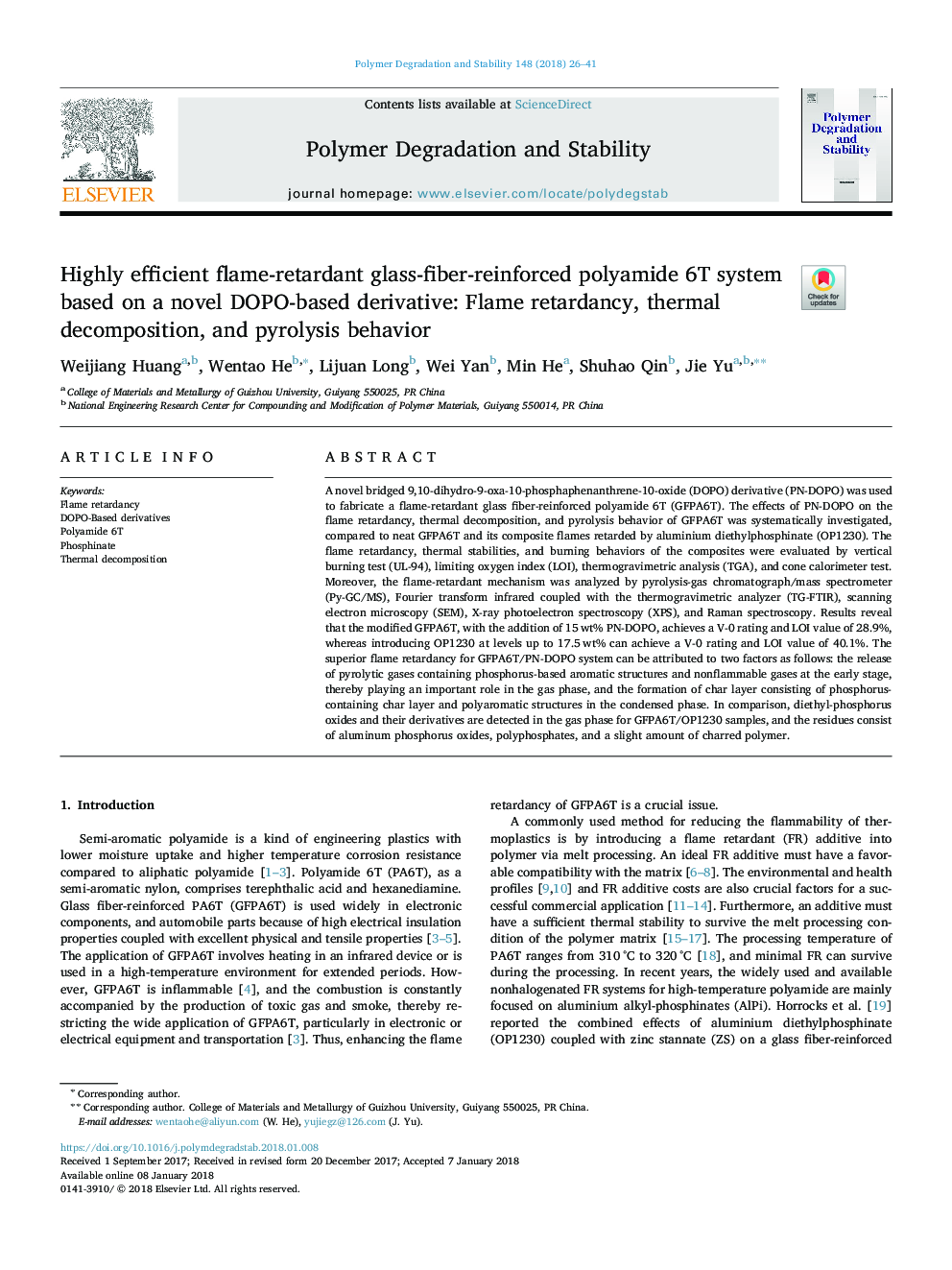| Article ID | Journal | Published Year | Pages | File Type |
|---|---|---|---|---|
| 7824158 | Polymer Degradation and Stability | 2018 | 16 Pages |
Abstract
A novel bridged 9,10-dihydro-9-oxa-10-phosphaphenanthrene-10-oxide (DOPO) derivative (PN-DOPO) was used to fabricate a flame-retardant glass fiber-reinforced polyamide 6T (GFPA6T). The effects of PN-DOPO on the flame retardancy, thermal decomposition, and pyrolysis behavior of GFPA6T was systematically investigated, compared to neat GFPA6T and its composite flames retarded by aluminium diethylphosphinate (OP1230). The flame retardancy, thermal stabilities, and burning behaviors of the composites were evaluated by vertical burning test (UL-94), limiting oxygen index (LOI), thermogravimetric analysis (TGA), and cone calorimeter test. Moreover, the flame-retardant mechanism was analyzed by pyrolysis-gas chromatograph/mass spectrometer (Py-GC/MS), Fourier transform infrared coupled with the thermogravimetric analyzer (TG-FTIR), scanning electron microscopy (SEM), X-ray photoelectron spectroscopy (XPS), and Raman spectroscopy. Results reveal that the modified GFPA6T, with the addition of 15â¯wt% PN-DOPO, achieves a V-0 rating and LOI value of 28.9%, whereas introducing OP1230 at levels up to 17.5â¯wt% can achieve a V-0 rating and LOI value of 40.1%. The superior flame retardancy for GFPA6T/PN-DOPO system can be attributed to two factors as follows: the release of pyrolytic gases containing phosphorus-based aromatic structures and nonflammable gases at the early stage, thereby playing an important role in the gas phase, and the formation of char layer consisting of phosphorus-containing char layer and polyaromatic structures in the condensed phase. In comparison, diethyl-phosphorus oxides and their derivatives are detected in the gas phase for GFPA6T/OP1230 samples, and the residues consist of aluminum phosphorus oxides, polyphosphates, and a slight amount of charred polymer.
Related Topics
Physical Sciences and Engineering
Chemistry
Organic Chemistry
Authors
Weijiang Huang, Wentao He, Lijuan Long, Wei Yan, Min He, Shuhao Qin, Jie Yu,
